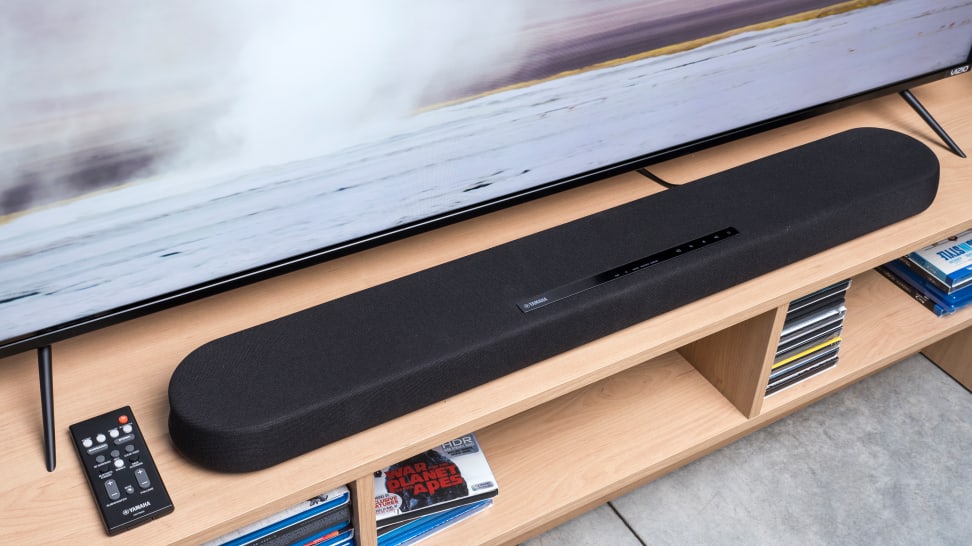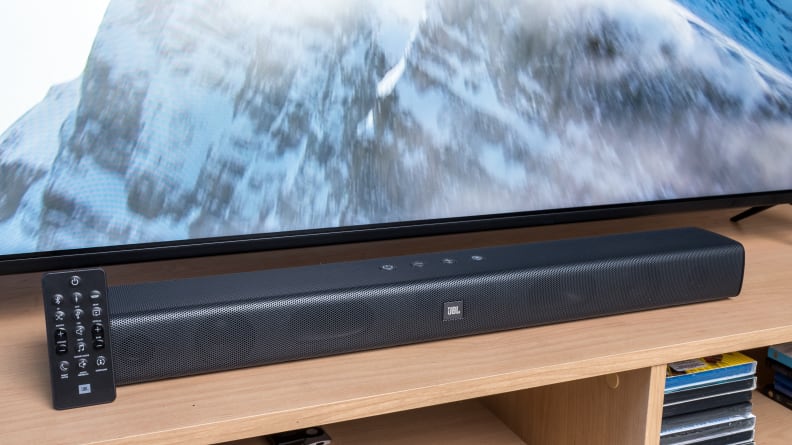This one cheap upgrade can make even an old TV sound so much better
You can't replace the screen, but you can replace the speakers!
 Credit:
Reviewed / Jackson Ruckar
Credit:
Reviewed / Jackson Ruckar
Products are chosen independently by our editors. Purchases made through our links may earn us a commission.
I've been reviewing TVs for almost seven years, and I'll be honest: it's kind of becoming a pointless job. It used to be that buying a cheaper, entry-level TV meant rolling the dice on whether or not it would have problems like stuck pixels, faulty inputs, or just really poor picture quality. But LED/LCD TV panel and component manufacturing has come so far in the last decade, nowadays you can get a 4K smart TV for a few hundred dollars that looks pretty darn good—or at least satisfactory. Reviewers, we're running out of runway!
On the other hand, built-in TV speakers have only gotten worse. Modern flat-panel TVs are much thinner than the boxy tube TVs of yesteryear, which is great for aesthetics and convenience, but doesn't leave much space in the TV for speakers. Even if you own a mid-tier or high-end TV worth a few thousand dollars, I'm willing to bet the audio is one of the most frustrating parts. When you turn it up enough to "match" the quality of the big screen, commercials are too loud, dialogue is hard to hear, or bass causes the whole TV to buzz. Sound familiar?
Well fortunately, there's a super easy fix. Even if your TV is 5 or 10 years out of date, you can improve (and maybe revolutionize) your audio experience with a soundbar.
What's a soundbar?

While there are some variations, generally soundbars are compact, horizontal containers for a series of speakers/drivers. Often, they also include a separate subwoofer.
Soundbars are compact, horizontal speaker boxes that sit in front of your TV (below the screen) and "pinch hit" for your TV's audio. Generally, TVs have "stereo" audio (a left and right channel) that is about 20 watts, or 10 for each speaker. While it's hard to quantify how much "sound power" a watt is, almost any soundbar you buy is going to have more than 20 watts of output. Some of the high-end ones are in the 200-300 range, but even a soundbar under $100 is miles ahead of your TV's speakers.
They also have different kinds of speakers, which excel in different areas. Your TV might have two of what are called "midrange drivers." They are a speaker type that is a jack of all trades, but they simply don't have the components to produce satisfying bass or treble frequencies. You can get by, sonically, with speakers like this, but it's also why the audio in commercials can sound jarring, or a movie's score or sound effects can often obscure dialogue: there isn't enough "room" for everything encoded into the audio to exist with enough separation.
A soundbar solves these problems, though how it does so will differ from product to product. Some soundbars are a standalone bundle of midrange speakers alongside speakers that specialize in bass or treble sounds. Some soundbars have an external "subwoofer," which is a separate box that houses a single very large driver that specializes in the deepest bass sounds. Whether you're hoping for improved audio from movies or better-sounding music for social gatherings, a soundbar is a great way to do both.
And unless you have a really old TV, your current set is already compatible. Almost every soundbar comes with the cables you'll need to use it. If your TV has an HDMI (ARC, Audio Return Channel) input, you can run that cable to the soundbar and re-route the audio information to it. If your TV has optical audio out, I've never seen a soundbar that didn't have an optical audio input jack. There are also options for analog or 3.5mm (headphone cable style) audio connections.
Which soundbar should I buy?
There's a ton of soundbars to choose from—in fact, there may be more technology and manufacturer reputations to wrap your head around than the TV market. Fortunately, we've started testing bunches of them to find the best performers with the best features.
If you want our favorite soundbar under $300, check out the JBL Bar 2.1, which is around $250 right now on Amazon and will seriously ramp up your TV audio experience. You can also check out all of our best-tested soundbars under $300 or under $200 if you want more options.
Whichever soundbar you get, though, it's a great way to transform the way you experience your TV—no matter how much you should probably replace it. (We have recommendations for that, too. Check out our favorite TVs under $500.)
